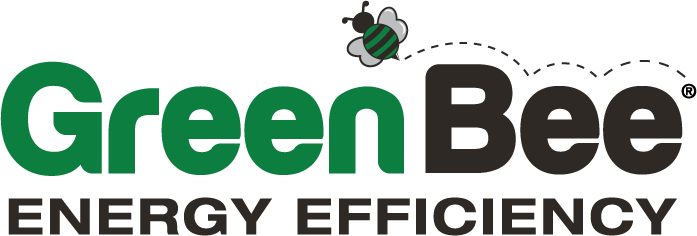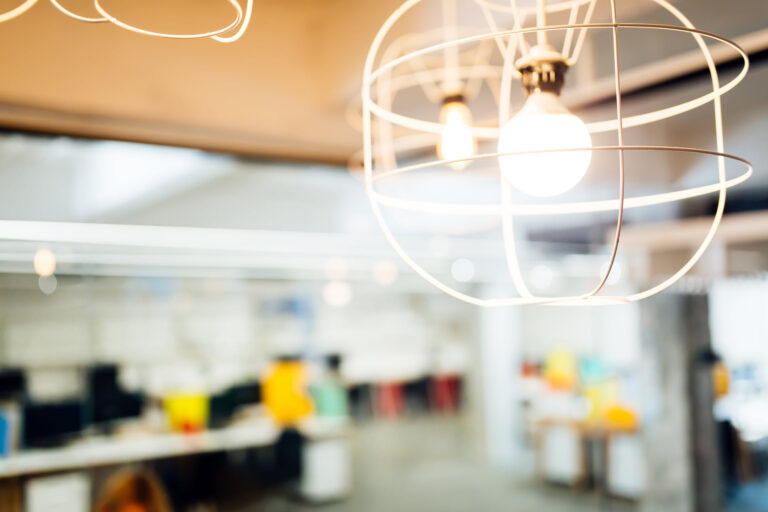Lighting plays a pivotal role in the workspace, far beyond just illuminating the surroundings for daily tasks. The advent of LED light technology has revolutionized not only energy consumption but also the very atmosphere of workplaces, significantly impacting employee morale. An environment that is well-lit with the appropriate lighting can transform a mundane or dreary office into a vibrant and energetic space, fostering a positive workforce. We’re going to explore the intricate connection between lighting and employee well-being, the benefits of LED lighting in modern workplaces, strategies to address high energy costs, the psychological effects of lighting, practical tips for improving workplace lighting, and success stories of businesses that thrived after revamping their lighting systems.
The Connection Between Lighting and Employee Well-Being.
The intricate relationship between lighting and employee well-being stems from the basic principles of human physiology. Exposure to natural or well-simulated light is crucial for maintaining our internal clock, or circadian rhythm, which governs sleep patterns, alertness, and overall energy levels. Environments that lack sufficient lighting can precipitate a host of negative physical and psychological effects, including increased eye strain, headaches, and fatigue. These conditions not only hinder productivity but can also contribute to a decline in an employee’s mental health, potentially leading to increased incidences of anxiety and depression.
On the flip side, workspaces that are thoughtfully illuminated, taking advantage of natural light or employing high-quality LED lighting, can have a profoundly positive effect. Such environments support optimal visual performance without causing glare or discomfort, thereby reducing the risk of eye strain and headaches. Moreover, lighting that closely mimics the qualities of natural light has been shown to support a healthy circadian rhythm, promoting better sleep patterns and more alert, energized employees during work hours.
The role of lighting in shaping the mood and atmosphere of a workspace cannot be overstated. Strategic lighting design can create an environment that enhances focus and productivity, contributing to a sense of well-being among employees. As such, understanding and harnessing the power of light is not just about physical comfort—it’s about nurturing a workspace that supports mental health and fosters a thriving, positive workforce.
The Role of LED Lighting in Modern Workplaces.
LED lighting has fundamentally altered the landscape of workplace illumination, setting new standards for efficiency, comfort, and environmental responsibility. This innovative lighting technology offers an array of benefits that directly impact not only the physical space but also the psychological environment of the workforce. By consuming up to 75% less energy compared to traditional lighting solutions, LED lights provide a sustainable and cost-effective alternative that significantly lowers operational expenses for businesses. The longevity of LED bulbs, which can last up to 25 times longer than their incandescent counterparts, further reduces maintenance costs and the inconvenience of frequent replacements.
Beyond economic and ecological advantages, LED lighting contributes to creating a more conducive work environment. Its ability to replicate the spectrum of natural daylight minimizes visual discomfort and supports the human circadian rhythm, thus enhancing employee alertness, reducing fatigue, and potentially boosting overall productivity. The versatility of LED technology also allows for customizable lighting solutions that can be tailored to meet the specific needs of various workspaces, from precise task lighting to ambient lighting that improves the overall aesthetic and mood of the environment.
Furthermore, the adoption of LED lighting reflects a company’s commitment to sustainability, a value increasingly important to today’s workforce and clients. By integrating LED lights into their design, workplaces not only address the immediate needs of their employees but also project a forward-thinking, environmentally conscious brand image. This subtle yet powerful message can enhance employee morale by fostering a sense of pride and belonging within the organization, knowing they are part of a broader, eco-friendly initiative.
Addressing High Energy Costs with Smart Lighting Solutions.
High energy costs can significantly impact a business’s bottom line, making the quest for more efficient lighting solutions a priority for many companies. By investing in LED lighting and integrating smart lighting systems, businesses can achieve a dramatic reduction in energy consumption. Smart lighting systems, leveraging technologies such as motion sensors, automated dimming, and programmable settings, offer a dynamic approach to managing light usage. These systems work by detecting the presence or absence of employees in a space, automatically adjusting the lighting accordingly. This ensures that light is used only when and where it’s needed, eliminating wasteful energy use.
Additionally, smart lighting can adapt to the varying levels of natural light throughout the day, dimming or brightening to maintain a consistent lighting level without unnecessary energy expenditure. This not only helps in conserving energy but also in maintaining an optimal work environment that promotes focus and productivity.
The initial investment in these technologies can be offset by the substantial savings on energy bills over time. Moreover, taking advantage of utility rebates and incentives for energy-efficient upgrades can further reduce the upfront costs associated with transitioning to smart lighting solutions. As businesses strive to navigate the challenges of high operational costs, the adoption of LED and smart lighting technologies presents a viable path to achieving financial savings while also enhancing the workplace environment for employees.
The Psychological Effects of Lighting on Employees.
The influence of lighting on the mental and emotional state of employees is both significant and multifaceted. Beyond mere visibility, the quality and type of light can directly affect workers’ moods, stress levels, and overall job satisfaction. Inadequate or harsh lighting conditions can lead to increased stress and anxiety, contributing to a tense and less productive work environment. Conversely, spaces that benefit from well-designed lighting, particularly those that incorporate elements of natural light or high-quality LED lighting, can enhance mood and create a more positive, serene workplace atmosphere.
Cognitive functions, such as memory retention, focus, and creativity, are also impacted by the lighting conditions in a workspace. Studies have shown that environments with optimal lighting conditions can lead to improved cognitive performance, facilitating better problem-solving abilities and innovation among employees. This is particularly relevant in industries where attention to detail and creative thinking are paramount.
Moreover, the perceived spaciousness and aesthetics of a workplace can be significantly influenced by its lighting. Well-lit areas are often perceived as more welcoming and spacious, contributing to an overall sense of comfort and well-being. On the other hand, poorly lit spaces can feel cramped and unwelcoming, potentially impacting the morale and productivity of the workforce.
Empowering employees with control over their lighting conditions, through adjustable lighting systems or personal task lights, further enhances their work experience. This autonomy allows individuals to tailor their environment to their specific needs and preferences, leading to increased job satisfaction and a stronger sense of personal well-being in the workplace.
Practical Tips for Improving Workplace Lighting.
Elevating the quality of workplace lighting can be achieved through a variety of straightforward adjustments, each playing a critical role in enhancing both employee morale and operational efficiency. Initiating with the optimization of natural sunlight, ensure that windows are not only clean but also unblocked, allowing for an unimpeded flow of daylight. This simple step can significantly brighten up a workspace, promoting a more lively and productive atmosphere.
Transitioning to LED lights is another impactful measure. These bulbs not only elevate the illumination quality but also contribute to considerable energy savings. Their extended lifespan further minimizes the hassle and expense of frequent replacements. Incorporating task lighting in specific work areas allows for focused, personalized light settings, catering to the diverse tasks and preferences of employees, thus reducing the need for intense, general overhead lighting.
The choice of lighting color temperature should not be overlooked. While cooler, blueish lights might invigorate focus and alertness in areas demanding high concentration, warmer tones could foster relaxation and creativity in communal or break areas. This nuanced approach to lighting can subtly influence productivity and well-being.
Finally, integrating smart lighting controls offers a dynamic solution to lighting management. These systems can adapt lighting levels in real-time, responding to changes in natural light availability and room occupancy, ensuring optimal lighting conditions throughout the day. By implementing these practical tips, businesses can create a more inviting, efficient, and pleasant working environment for their employees, directly contributing to enhanced morale and reduced operational costs.
Success Stories: Businesses That Thrived After Revamping Their Lighting.
The transformative power of upgrading lighting systems is not just theoretical; it’s evidenced by the real-world success stories of various companies. A case in point involves a mid-sized marketing firm that made the switch to LED lighting throughout its offices and adopted smart, eco-friendly lighting solutions. This strategic shift not only led to a 50% drop in their energy bills but also catalyzed an unexpected uptick in employee engagement and creativity. Feedback from staff highlighted an enhanced workplace ambiance that stimulated innovation and fostered a more collaborative spirit among teams.
Another inspiring example comes from a manufacturing facility that struggled with dim, outdated lighting, contributing to errors and a decline in worker morale. By integrating advanced LED lighting with adjustable brightness and color settings, the facility saw immediate improvements. Error rates decreased by over 30%, and worker morale soared, with surveys indicating a significant rise in job satisfaction and a stronger commitment to quality work.
In the hospitality sector, a boutique hotel revamped its lighting to create a warmer, more inviting atmosphere for guests, using a combination of natural light enhancements and ambient LED solutions. The investment paid off in spades, with a notable increase in guest satisfaction scores and repeat business, alongside commendations for the hotel’s commitment to sustainability and comfort.
These success stories underline a universal truth across industries: Thoughtful lighting upgrades can be a game-changer, dramatically reducing operational costs, elevating employee morale, and, ultimately, driving business success.
Planning Your LED Upgrade With GreenBee.
At GreenBee we specialize in planning, design, installation, and financing of LED lighting upgrades, including the application to rebate programs on behalf of clients. Let us help you foster a positive workforce and transform your office space by booking a consultation today.




